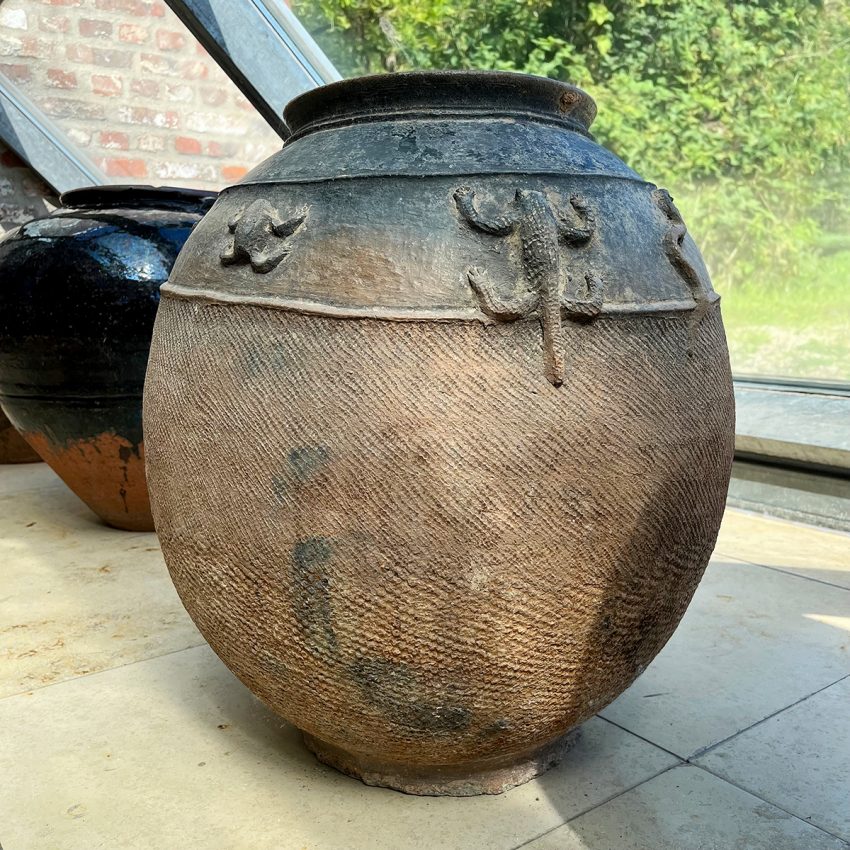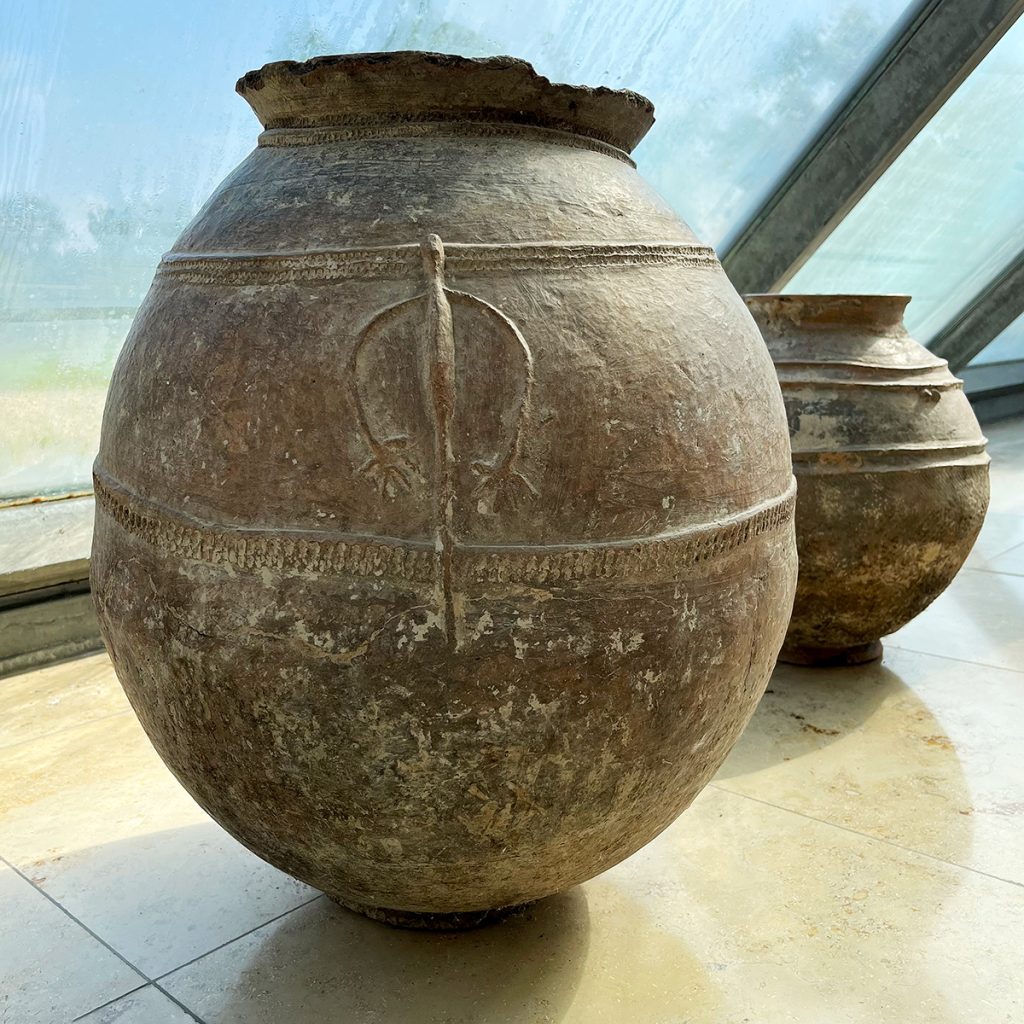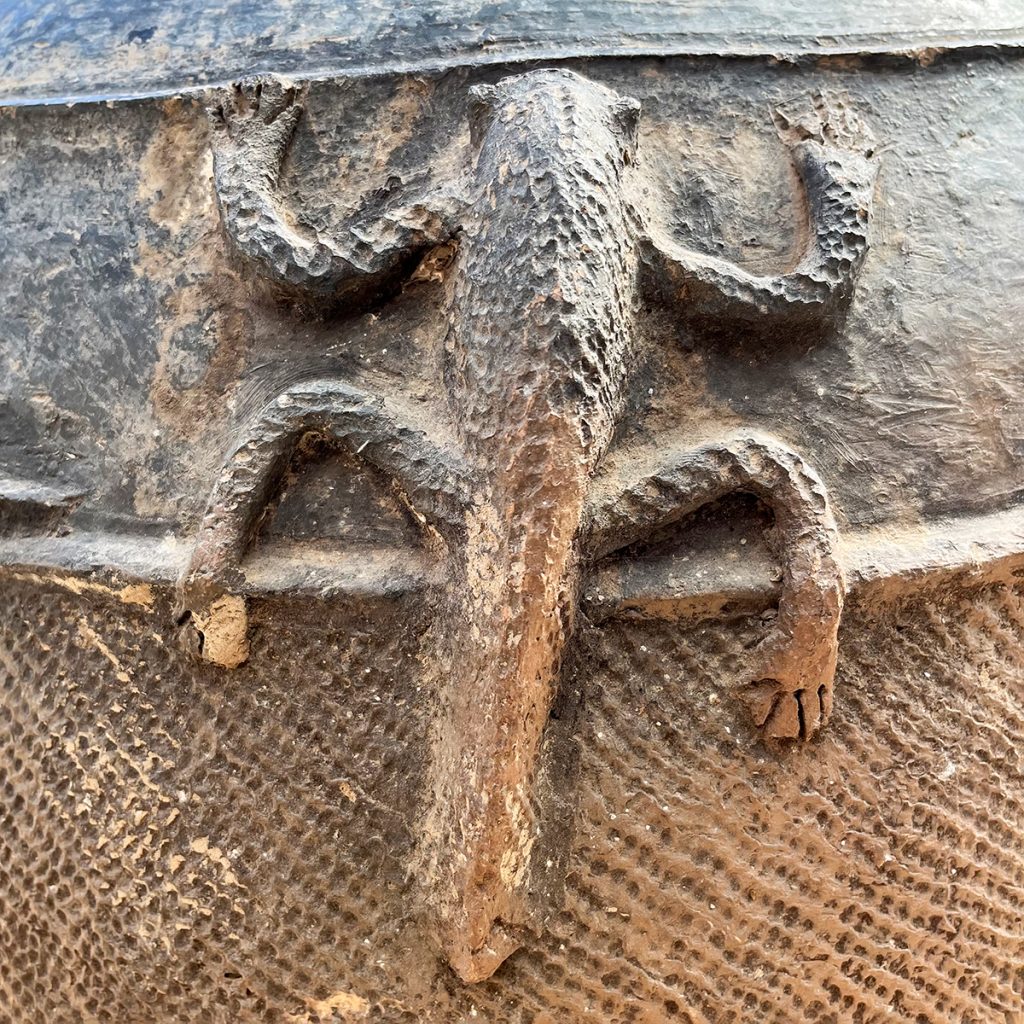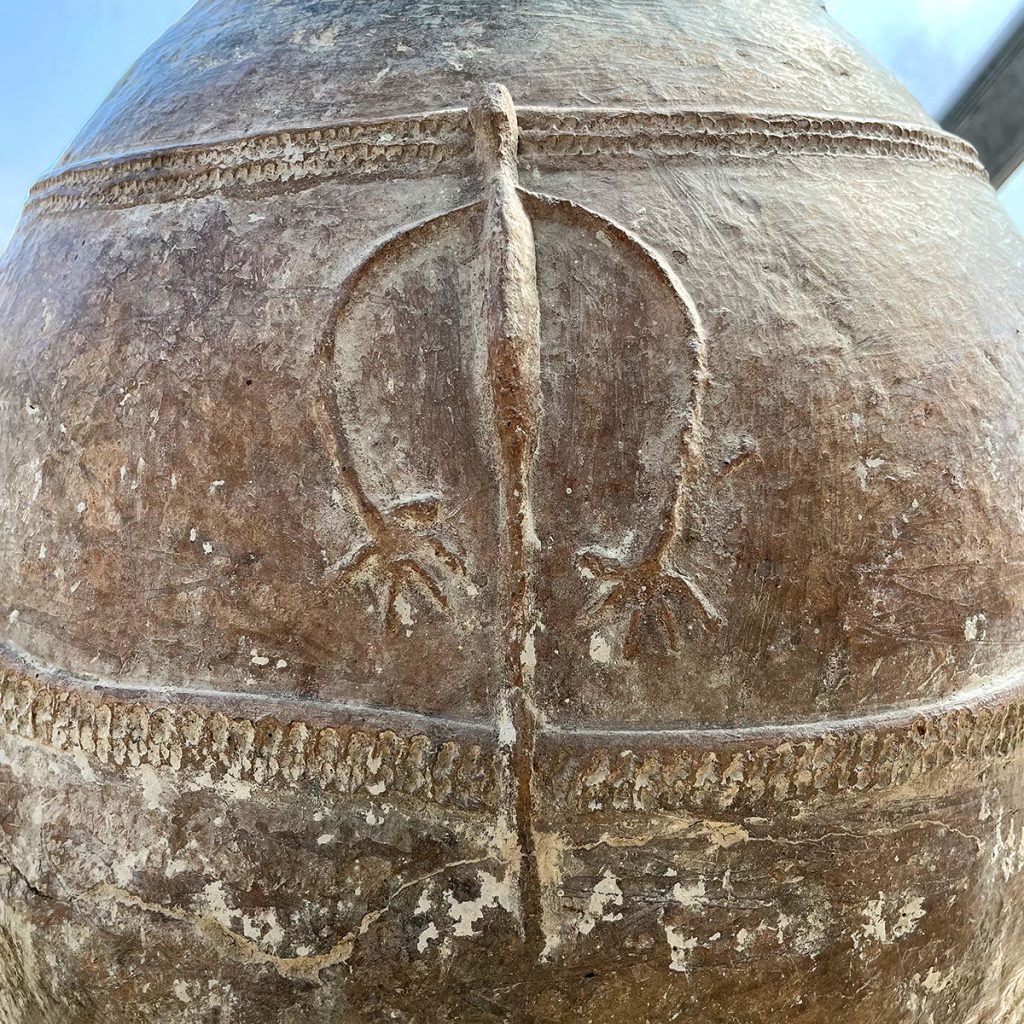
Martaban storage jars
. . . . . . . . .
Storage jars come in all shapes and sizes. Indeed, given their beneficial functional properties, they were one of the first forms of pottery to be produced on scale. Some of the most impressive jars are the traditional tapáyan or tempayan from the Austronesian island cultures in south-east Asia, used for fermenting rice (tapai), vinegar or alcoholic beverages and for storing foodstuffs. But also for funerary urns to hold the cremated ashes of the deceased. Included in the tapáyan type of storage jar are those known as martaban, derived from the important trading post in modern-day Myanmar from where they were exported.

Martaban storage jars were used to store and transport grain, wine, candied fruits, spices and valuable trading goods like opium on the historic Maritime Silk Road that connected the East and West. The jars themselves were imported from surrounding countries, initially from southern China and later from Thailand, Myanmar, Cambodia, Laos, Vietnam and the Austronesian islands.
In addition to the impressive round-shouldered glazed varieties we have come to know, there are also exquisitely decorated earlier examples, showing unbelievable mastery and skill, unglazed with elaborate ornamentation and embellishments, such as biomorphic figures and local fauna. Hardly surprising then that such jars became highly sought after as trading goods in themselves and adopted as heirlooms and symbols of wealth and status among various indigenous cultures in south-east Asia.


Martaban storage jars in Museum Insel Hombroich, Neuss, near Düsseldorf.
. . . . . . . . .
Stiftung Insel Hombroich
Minkel 2, 41472 Neuss